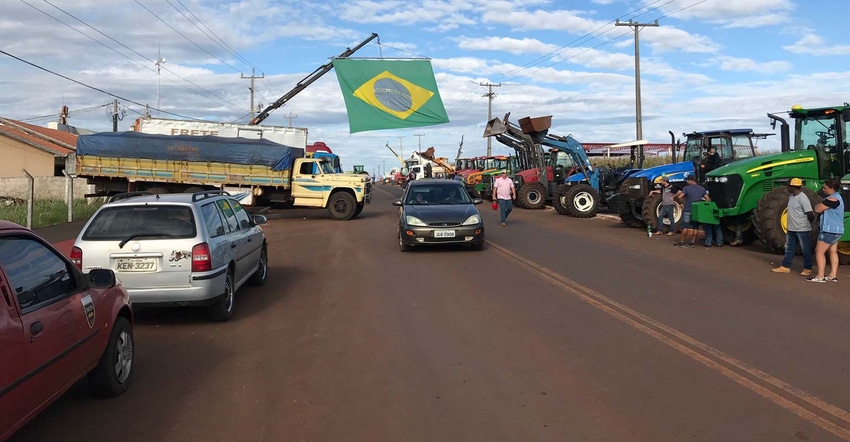
Dodging bullets is tough business. But that’s just what happened in one Brazilian rural community during the truckers’ strike that left millions without gasoline, medicine and many foodstuffs.
The Brazilian government folded like a lawn chair, and the truckers’ strike is over. It shows just how dependent your competitor is on eighteen wheelers for transport.
While you can count on barges and railways to get a lot of your beans and corn to port, the Brazilian farmer needs truckers, and they know it.
None more so than the leadership of the Toledo, Parana Ag Syndicate, headed up by Nelson Paludo. Toledo, Brazil, lies way out west in the state of Parana, not too far from the border with Paraguay. And unlike Toledo, Ohio, it’s a rural community producing some 350,000 broilers and 7,300 hog carcasses daily, according to Paludo.
And that means a lot of feed rations need to be shipped.
Paludo and other local ag leaders sat down with representatives of the major truckers��’ unions on the first day of the strike, he told me. The truckers complained about the high cost of diesel. But, they explained, the local economy could go to ruins as the result of a strike among truck drivers.
“So the truckers agreed to deliver between 40% and 100% of the feed ration (at pre-strike cost levels) needed daily during the strike,” Paludo says. And local producers joined the strikers in blocking traffic on highways to heighten awareness of the high cost of diesel.
Paludo says that up to 50 local tractors stood alongside trucks parked on highways during the strike in solidarity with truckers who were suffering from losses due to diesel fuel price increases.
Not all municipalities across Brazil saw such cooperation. The trucker’s strike caused economic forecasters to lower Brazil’s expected 2018 GDP growth to 2.47% from the earlier estimate of 2.97%. The fiscal deficit is bound to climb from the price cut—basically a fuel cost subsidy.
Paludo is a soybean and corn producer, but his community lives or dies based on the production of animals that eat that soy and corn in the form of rations.
As he watches his 330 acres of second-crop corn mature out in the fields, he’s grateful his community was able to dodge a bullet. But the strike still leaves a scar: The Parana state Organization of Ag Cooperatives reported Monday that the truckers’ strike had cost the state nearly $1 billion in lost revenue.
The opinions of the author are not necessarily those of Farm Futures or Farm Progress.
About the Author(s)
You May Also Like






